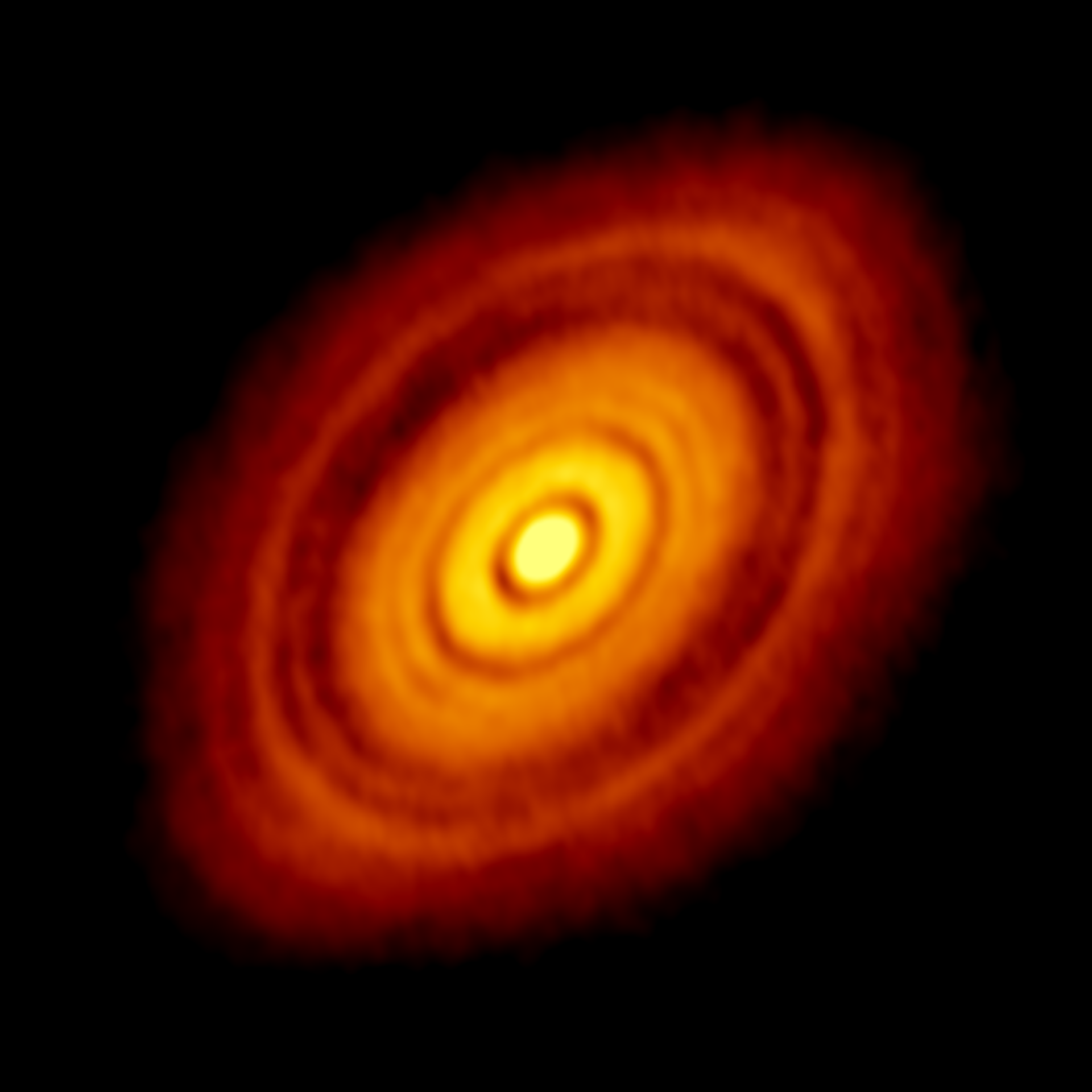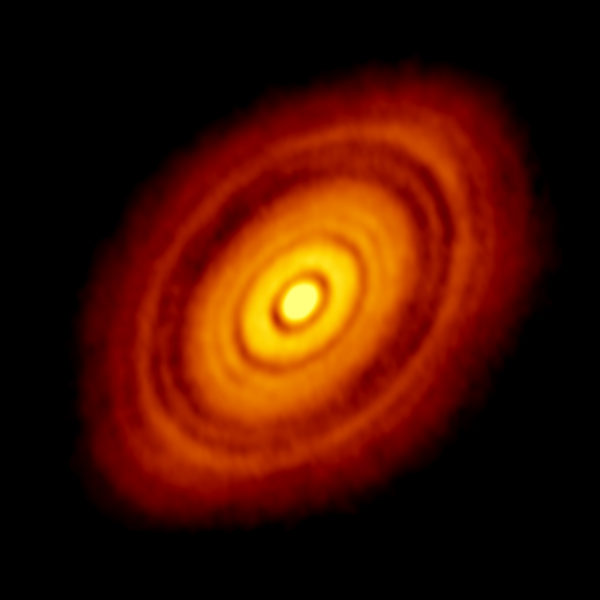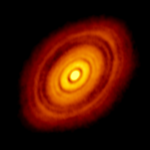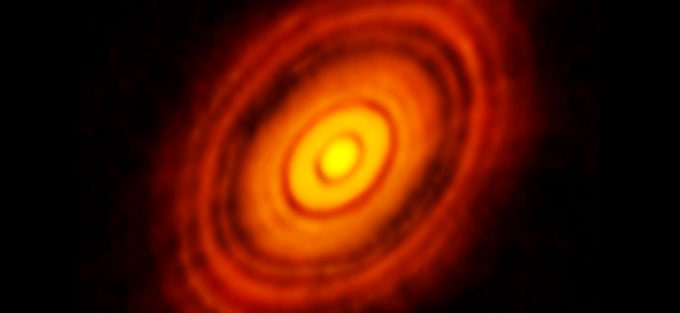Iconic ALMA image quoted in over a thousand scientific papers in less than a decade
18 August, 2022 / Read time: 4 minutes
Set for significant upgrades in 2030, ALMA continues to bring unprecedented depth and understanding of celestial objects near and far.
Ground-breaking 2014 HL Tau observational data from the Atacama Large Millimeter/submillimeter Array (ALMA) has been cited in more than 1,000 scientific studies in the past 7.5 years, aiding in major breakthroughs in scientists’ understanding of planet formation. The milestone comes in moments the observatory, along with its partners (NRAO, ESO and NAOJ) embark on an ambitious upgrades.
During science verification testing of ALMA’s then-new high-resolution capabilities in 2014, astronomers turned the telescope on HL Tau, a very young star system located 450 light years away from Earth in the constellation Taurus. The resulting image uncovered astonishing details in the planet-forming disk surrounding the Sun-like star and laid the foundation for nearly a decade of increasingly revelatory research. “When we were planning the first ALMA Long Baseline Campaign in 2014, targets were chosen for a range of science categories that were bright and well-studied at lower angular resolutions and that might show, as yet unrevealed, a structure at higher angular resolutions,” said Crystal Brogan, an astronomer at NRAO and the lead author of the original results paper, which published in The Astrophysical Journal in 2015 and was made possible by a wide range of scientists and engineers across the global ALMA collaboration. “For the protoplanetary disk topic, we were anxious about the potential that we would see little to nothing, certainly nothing spectacular. At that time, there was little indication that there would be many substructures in disk morphology at this relatively early stage of protoplanetary disk evolution. In other words, we feared it could be a flop.”
Ultimately, scientists unveiled not only the best image ever produced using ALMA but also the clearest picture at the time of planet formation, with detail previously available only in computer simulations and artists’ conceptions. The never-before-seen features in the young star system— including multiple concentric rings separated by clearly defined gaps revealed in even greater detail by NSF’s Karl G. Jansky Very Large Array (VLA) in 2016— are now considered hallmarks of planet formation. “The extraordinary level of substructure that we observed in HL Tau that could only be revealed by ALMA’s longest baselines has changed the paradigm of protoplanetary disk formation, evolution, and ultimately our understanding of planet formation forever,” said Brogan. “The remarkable number of papers to date is a direct consequence of its scientific impact.” Similar substructures have now been observed in a wide range of protoplanetary disks, with more being observed by ALMA every year. However, HL Tau will forever be the first.”
Stuartt Corder, Deputy Director of ALMA and a co-author of the original results paper, added, “The result was truly moving, beautiful as well as profound. Hard work over decades, plus a dramatic sprint to finish the infrastructure in the middle of 2014, enabled this dramatic and transformational result.”
In addition to providing evidence for long-held theories of planet formation, the 2014 observations of HL Tau opened new windows on the Universe for both professional scientists and aspiring astronomers alike. Todd Hunter, an astronomer at NRAO and a co-author of the original results paper, said, “Eighty-three of these citations are from Ph.D. theses, meaning that the careers of an entire generation of young astronomers have been influenced by it.” Hunter added that forthcoming NSF-supported upgrades to ALMA’s 1.3mm (Band 6) receivers— which were developed at NRAO’s Central Development Laboratory (CDL) and were instrumental in capturing the now-famous images— will further increase the telescope’s capabilities to reveal the secrets of how star systems evolve and planets are formed. “ALMA and its partnershave recently embarked on a Wideband Sensitivity Upgrade to improve the sensitivity and spectral grasp of the observatory, which will include the development and deployment of more powerful digital signal processing technology. These combined upgrades are essential to enable the next fundamental leap forward in understanding planet formation. They will vastly increase the number of molecules studied in detail in a single observation of a circumstellar disk.”
The 2014 HL Tau results have been cited in 1,013 scientific papers.
Additional Information
ALMA is a partnership of ESO (representing its member states), NSF (USA) and NINS (Japan), together with NRC (Canada), MOST and ASIAA (Taiwan), and KASI (Republic of Korea), in cooperation with the Republic of Chile. The Joint ALMA Observatory is operated by ESO, AUI/NRAO and NAOJ.
Image

Contacts
-
Nicolás Lira
Education and Public Outreach Coordinator
Joint ALMA Observatory, Santiago - Chile
Phone: +56 2 2467 6519
Cel: +56 9 9445 7726
Email: [email protected]
-
Amy C. Oliver
Public Information & News Manager
National Radio Astronomical Observatory (NRAO), USA
Phone: +1 434 242 9584
Email: [email protected]
-
Junko Ueda


